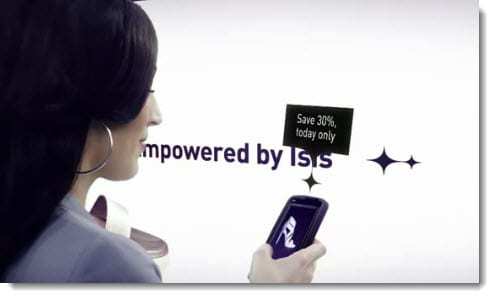 The latest statistics have shown that the NFC technology based payments average 5 transactions per user per week.
The latest statistics have shown that the NFC technology based payments average 5 transactions per user per week.
While mobile wallet projects may have had a slow start, causing some to doubt whether or not they’d ever take off, the Isis trial in Salt Lake City is starting to show that once people adopt the service, they become active users.
Isis remains in its very earliest phase, existing only in official trials within two cities at the moment.
According to Jim Stapleton, the chief sales officer for the mobile wallet joint venture, the Salt Lake City trial is beginning to show some very promising data from the side of both the merchants and the consumers. Stapleton made this announcement at a Utah smart card conference media briefing.
He said that the average Isis mobile wallet user makes payments an average of five times or more with the service.
Stapleton also said that the typical customer that uses the mobile wallet has an average of five loyalty card and coupon features with the merchants who accept this type of smartphone payment. This is highly appealing to merchants, as customers who participate in loyalty programs are twice as likely to visit those businesses than consumers who are not members.
That said, Stapleton did not reveal how many users the mobile wallet actually has in the city. Therefore, there is no way to know whether or not this promising data represents a large user base or only a smattering of very active participants.
The Isis mobile wallet is a joint venture among T-Mobile, Verizon Wireless, and AT&T. Their service is in direct competition with Google Wallet, as they are both based on near field communication (NFC) technology and are running their trials in the same two American cities. Unlike the other carriers, Sprint opted to work with Google instead of Isis.
The Isis mobile wallet was first launched in Salt Lake City and in Austin, after several delays from its initially intended start date during the summer. The program also faced many challenges since then, particularly in the area of awareness and adoption. There were troublesome struggles, as the majority of handsets have yet to be NFC technology enabled, so the potential market is already relatively limited.
